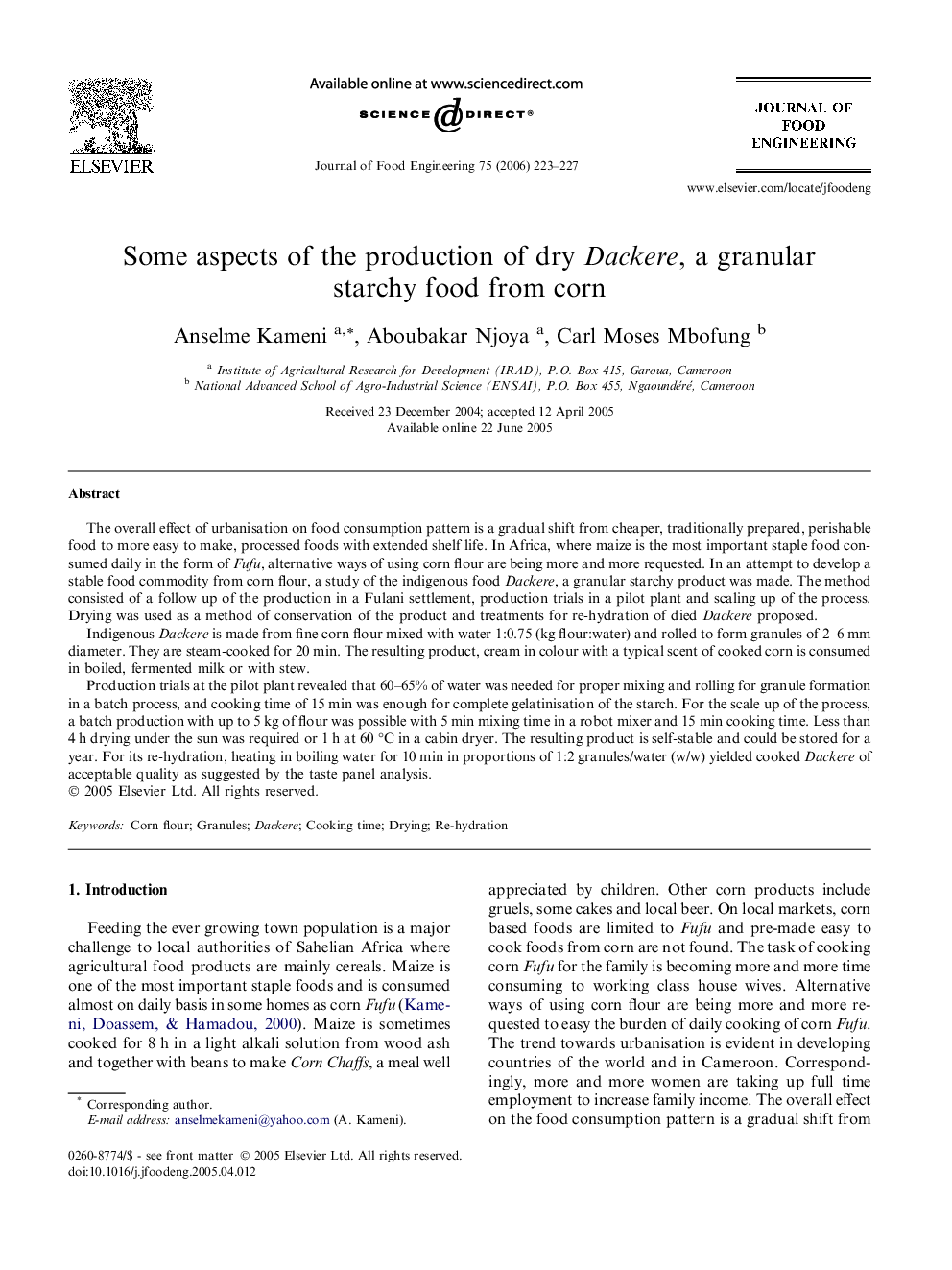| Article ID | Journal | Published Year | Pages | File Type |
|---|---|---|---|---|
| 226347 | Journal of Food Engineering | 2006 | 5 Pages |
The overall effect of urbanisation on food consumption pattern is a gradual shift from cheaper, traditionally prepared, perishable food to more easy to make, processed foods with extended shelf life. In Africa, where maize is the most important staple food consumed daily in the form of Fufu, alternative ways of using corn flour are being more and more requested. In an attempt to develop a stable food commodity from corn flour, a study of the indigenous food Dackere, a granular starchy product was made. The method consisted of a follow up of the production in a Fulani settlement, production trials in a pilot plant and scaling up of the process. Drying was used as a method of conservation of the product and treatments for re-hydration of died Dackere proposed.Indigenous Dackere is made from fine corn flour mixed with water 1:0.75 (kg flour:water) and rolled to form granules of 2–6 mm diameter. They are steam-cooked for 20 min. The resulting product, cream in colour with a typical scent of cooked corn is consumed in boiled, fermented milk or with stew.Production trials at the pilot plant revealed that 60–65% of water was needed for proper mixing and rolling for granule formation in a batch process, and cooking time of 15 min was enough for complete gelatinisation of the starch. For the scale up of the process, a batch production with up to 5 kg of flour was possible with 5 min mixing time in a robot mixer and 15 min cooking time. Less than 4 h drying under the sun was required or 1 h at 60 °C in a cabin dryer. The resulting product is self-stable and could be stored for a year. For its re-hydration, heating in boiling water for 10 min in proportions of 1:2 granules/water (w/w) yielded cooked Dackere of acceptable quality as suggested by the taste panel analysis.
